Steps of Courage
Exploring resistance in Hitler's Germany
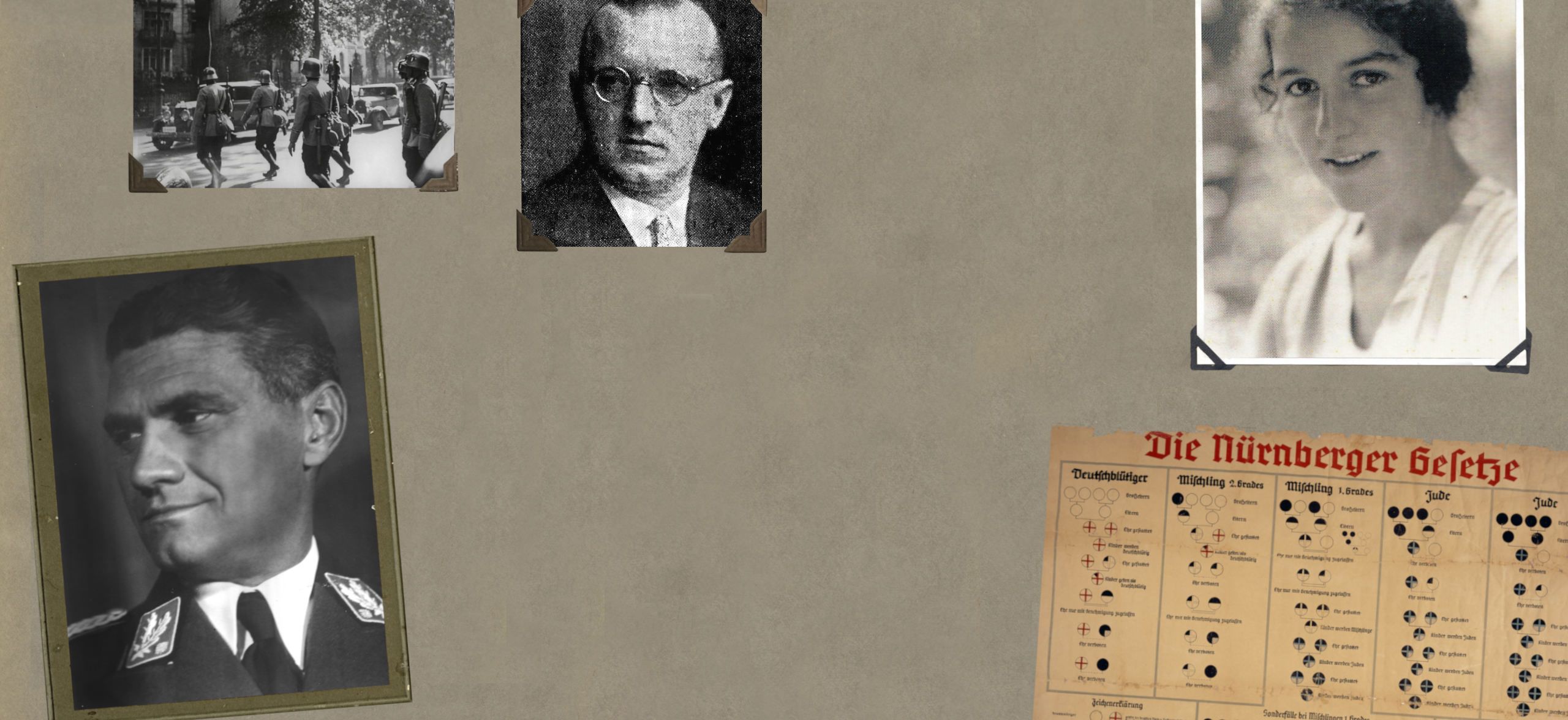
Escaping the shadow of the Swastika
The remarkable story of a ‘whistleblower’ for the Nazi regime and a young Jewish woman he helped to escape will be explored as part of "Upstander or Bystander?" an event organised by the University as part of Aberdeen in America.
Organised by the University of Aberdeen, it will bring together Bettina Hoerlin, whose mother was forced to flee Nazi Germany, and prominent historian Thomas Weber, whose research offers new insights into a key character who instigated the daring evacuation.
The Night of the Long Knives and a case of mistaken identity
The story begins on the infamous Night of the Long Knives, June 30, 1934, when hundreds of perceived opponents of Hitler were rounded up and executed.
Among them was Willi Schmid (left), a well-known literary and music critic who was killed in a case of mistaken identity due to the misfortune of sharing a name with someone else who appeared on the list.
His wife Kate, Bettina Hoerlin’s mother, who had been born to Jewish parents but converted to Catholicism upon her marriage to Willi, sought answers.
Rudolf Hess, Hitler’s deputy, visited her himself to apologise for the mistake along with Fritz Wiedemann, the Führer’s personal adjutant in the peacetime years of the Third Reich.
The connection with Wiedemann was to prove crucial to her later escape as the Nazi persecution of the Jews intensified.
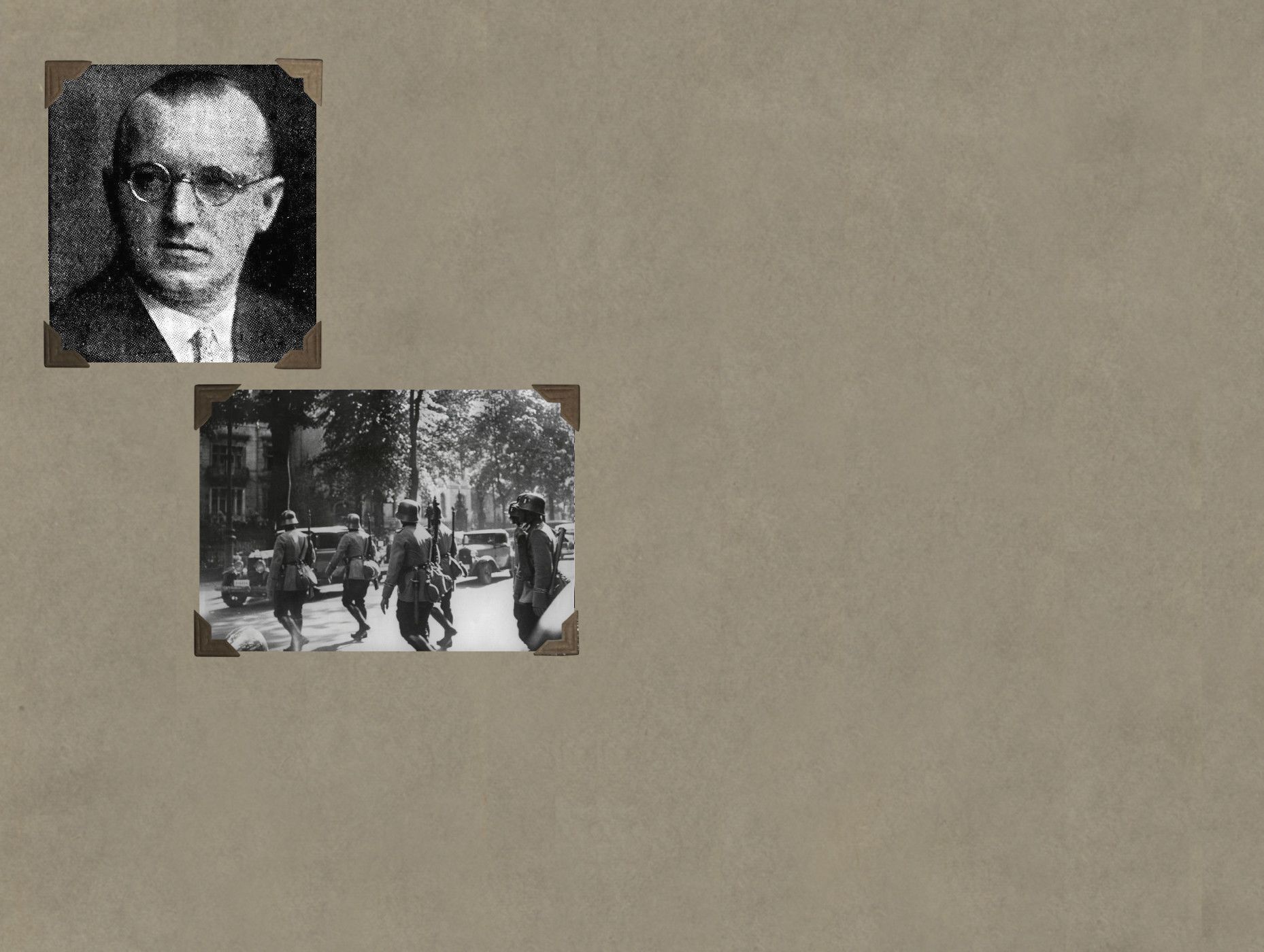
Escape to America
Following the death of her husband Willi Schmid, Kate (left)– a mother to three young children - met and fell in love with Hermann Hoerlin (right), a renowned mountaineer who was studying to become a physicist.
Kate considered herself Catholic and her descent was not known to Hess or the other senior Nazis whom she had petitioned for stipends following her husband’s death.
By 1936 when the Nazis sought to classify Jews, her documents showed on the one hand that she had been born to Jewish parents but on the other had converted to Catholicism in 1921.
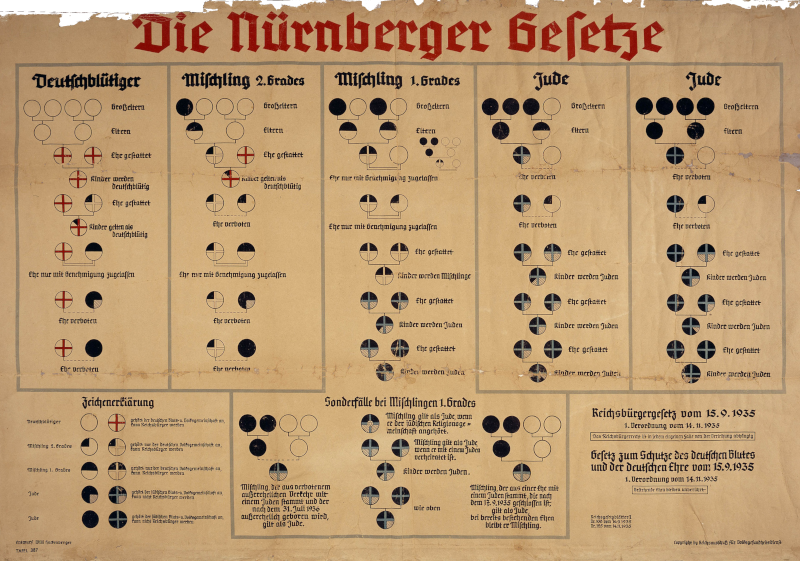
Chart showing racial classification as defined by the Nurnberg Laws of 1935.
Chart showing racial classification as defined by the Nurnberg Laws of 1935.
Whether she would be classed as a ‘full Jew’ and stripped of her German citizenship or a mischling (half Jew) was crucial. She turned to Wiedemann who promised to look into the classification process.
Bettina Hoerlin revealed the details of how he aided her parents extraordinary journey in Steps of Courage (2011, Authorhouse) based on their letters and her own meticulous historical research.
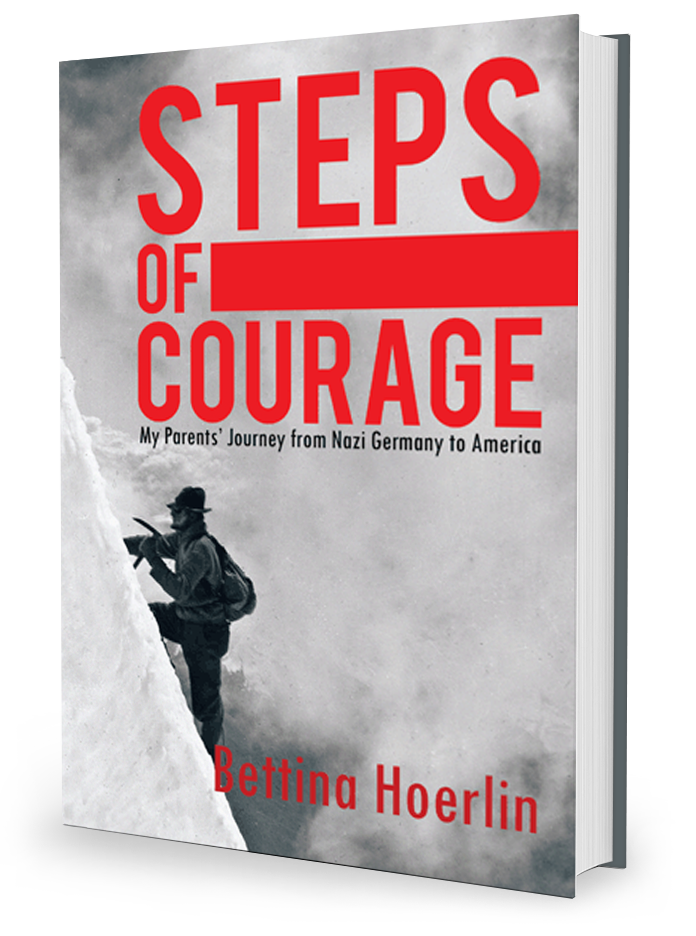
Wiedemann helped to secure her status as ‘a half Jew of the first degree’ and in 1936 – despite her precarious position within Nazi society – she stood before the top brass of the Third Reich to negotiate barriers she faced to emigration. These included assurance that the stipends from Willi Schmid’s wrongful death would follow her and the children wherever she settled.
Remarkably – with the influence of Wiedemann – she was granted a free choice on where to emigrate but she had another hurdle to overcome – to move together they must be married but this was contrary to the Nuremberg Laws forbidding such a union.
‘The scenario borders on the surreal. In the middle of 1937, my Jewish mother is meeting in the headquarters of the Third Reich with Hitler’s top personal aide, who tucks Kate’s photo in his wallet and offers to scheme with her and her future husband on how they could leave Germany.’
Kate relocated initially to Austria but following the Anschluss in 1938, she sought options further afield and Wiedemann pointed them towards America.
He intervened in their application for marriage which required an exception to be made to the Nuremberg laws and on July 12, 1938 they became Mr and Mrs Hoerlin.
The Hoerlins set sail for America in 1938 where they settled in Binghamton, New York. Bettina was born a year later.
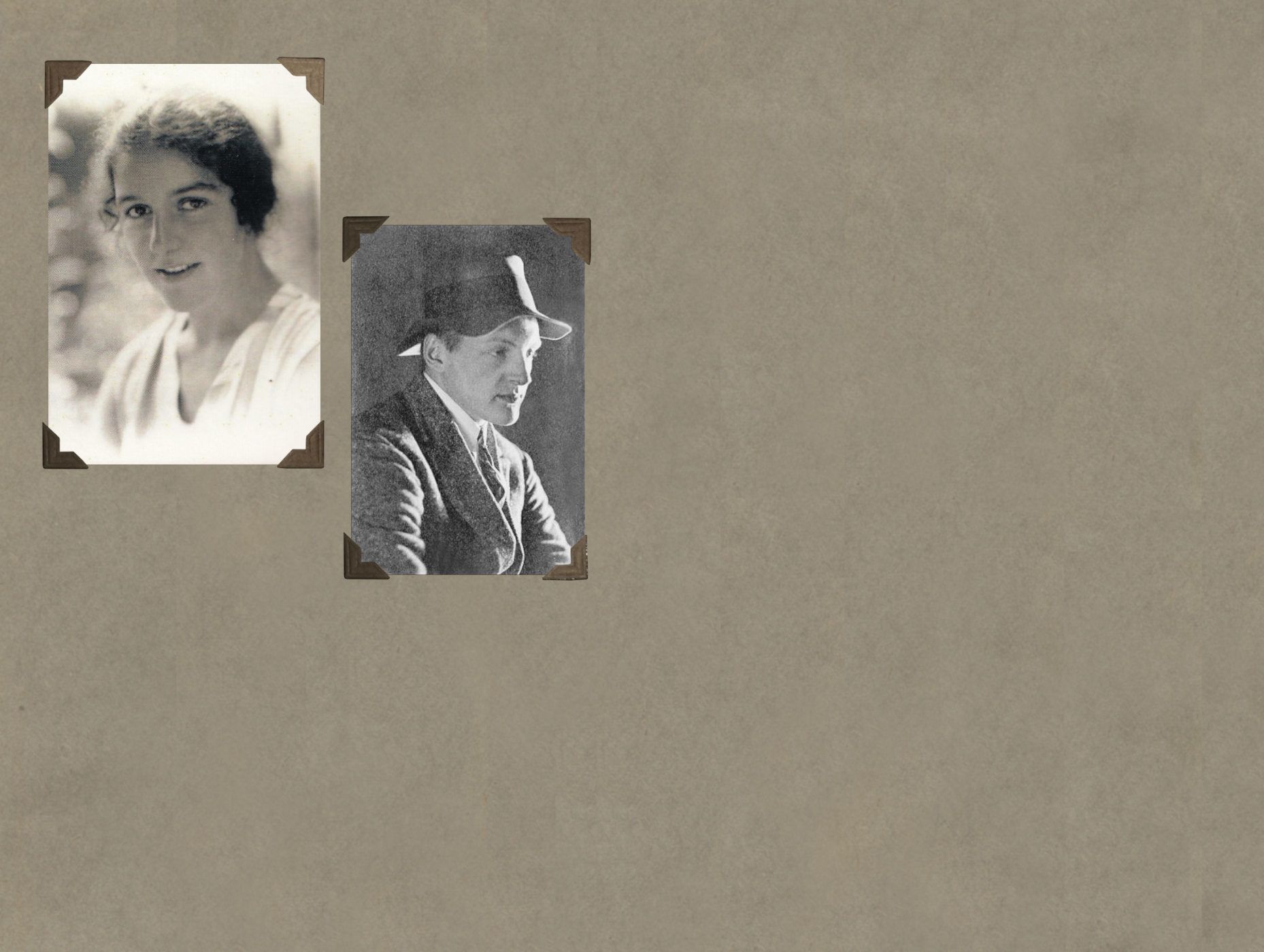
Who was Fritz Wiedemann?
Fritz Wiedemann was a near-paternal figure for Adolf Hitler in World War One and backed his nomination for the Iron Cross. He went on to become the Führer’s personal adjutant accompanying him on state visits, facilitating meetings and dealing with Hitler's correspondence.
They fell out in early 1939 and he was sent as German Consul General to San Francisco.
In public he continued to support the Nazis but papers uncovered by Dr Weber paint a very different picture of his time in America to the ‘playboy lifestyle’ he has been more commonly associated with.
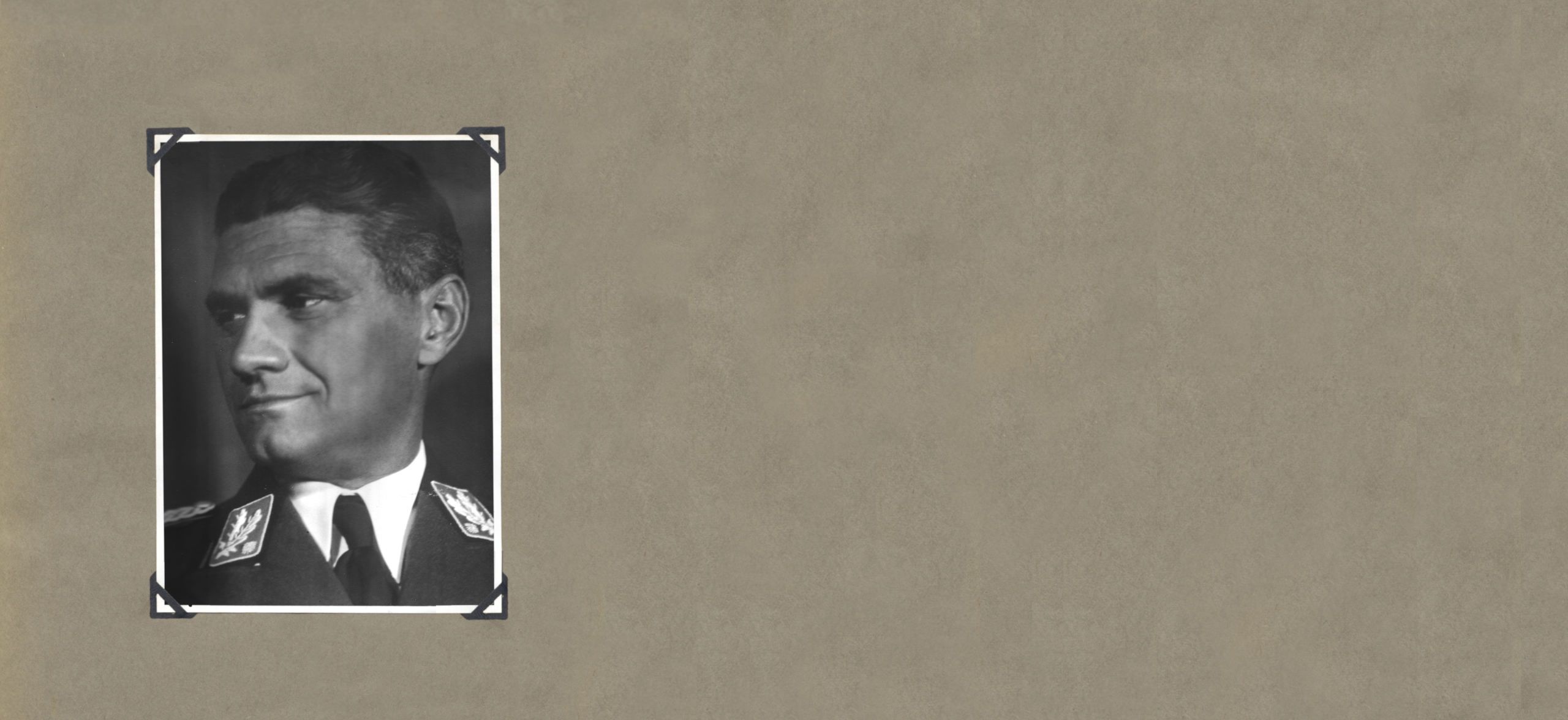
The Nazi Whistleblower
In 1939, following a fall-out with Hitler, Wiedemann made the journey across the Atlantic to become German Consul General in San Francisco.
During this period he was viewed as a committed Nazi but like the experience of the Hoerlins, research by Professor Thomas Weber from the University of Aberdeen for his successful book Hitler’s First War, paints a very different picture.
Professor Weber uncovered details in intelligence files and in the private papers of a former British intelligence officer which revealed how Wiedemann unsuccessfully tried to persuade the British and then the Americans to facilitate Hitler's removal from power in 1940.
Prof. Weber said: “I showed in Hitler’s First War how Wiedemann had secretly met up with a senior British intelligence representative in a San Francisco Hotel in 1940.
“Following the publication of the book, I stumbled, amongst the collections of Yale University, across the private papers of Sir William Wiseman, who met with Wiedemann, which really gave us a true flavour of the lengths he was prepared to go to in acting against Hitler”.
The notes in the files Prof. Weber uncovered say Wiedemann was convinced that Hitler ‘has a split personality. He is always kind to children and dogs but can be the most cruel man in the world’ and he ‘believes himself to be a superior Napoleon and is convinced that he can conquer the world’.
Following the Battle of Britain, Wiedemann informed British intelligence Hitler was ‘completely convinced that the British could not stand mass bombing and ‘that the British Empire [was] in the process of breaking up’. Furthermore, Wiedemann claimed that ‘Hitler was most frustrated that from his inner circle only Göring supported his invasion plans, while the commander of the German navy, Erich Raeder, had told him to his face that invading Britain “was mad and would end in a massacre’.
After the Luftwaffe’s defeat over the skies of Britain, Wiedemann stated, Hitler was ‘like a sleepwalker who bumped into a wall and woke up and did not know what to do next’. Wiedemann therefore advised the intelligence officer that ‘now was the time to strike back at Germany hard’.
Hitler, according to Wiedemann, was even more ignorant about the United States, believing that ‘the United States will come into the war but does not believe it will make any difference’, as Hitler viewed the United States ‘as a country of gangsters, without any military importance whatever’ and as a country on the ‘verge of social revolution’.
After German diplomats were required to leave the U.S. in July 1941, he was despatched as a diplomat to Tianjin, China for the rest of the war where he quietly helped Jewish émigrés and refugees.
As the documents uncovered by Weber reveal, Wiedemann repeatedly urged the British and Americans to take swift action against Hitler, as it would make “all the difference”, “if Hitler was done away with.” Wiedemann also offered his services to the Americans and the British, and he offered to give a tell-all interview to the media. His offers to unmask and bring down Hitler were shot down every single time, by the White House, State Department, and by British authorities.
As a result, says Weber, Hitler did not only continue to be Germany’s leader until 1945, but people in the present day are more likely to believe the stories Hitler invented about himself than those of his failed whistleblower.

Returning the Support
Following the end of the war in 1945, Wiedemann was summoned as a witness to the Nuremburg trials where prominent members of the Nazi leadership were prosecuted for their involvement in the Holocaust and other war crimes.
When Kate read in a newspaper that Wiedemann was en route to Nuremberg she immediately contacted the Pentagon to inform them that she had letters from Wiedemann which would be of interest.
The persistence she had shown in Nazi Germany continued. She insisted on delivering the letters in person when she was directed to send them in and refused to leave until the letters, written in German, had been translated so that their significance could be understood.
She stated that her letters showed clearly that while in San Francisco Wiedemann was ‘entirely out of sympathy with Hitler and the Nazi party, and anxious to contact the Allied authorities for the purpose of arranging some plan by which the Nazi party and its leaders could be eliminated. Charges made against Wiedemann were dropped in 1948 and he subsequently returned to farming, disappearing from public life.
Speaking to our times
Bettina Hoerlin was a teenager by the time she learned her mother was Jewish.
"They were of a generation where people didn't discuss things. Many people who went through World War II don't talk about it. It was painful for them," she has said.
But their stories will now be used as the focus of a discussion titled Upstander or Bystander? Why Resistance in Hitler’s Germany Speaks to Our Times.
They will look at how we can inspire a new generation who will know when and how to stand up, rather than to stand by, and the agonising choices this entails.
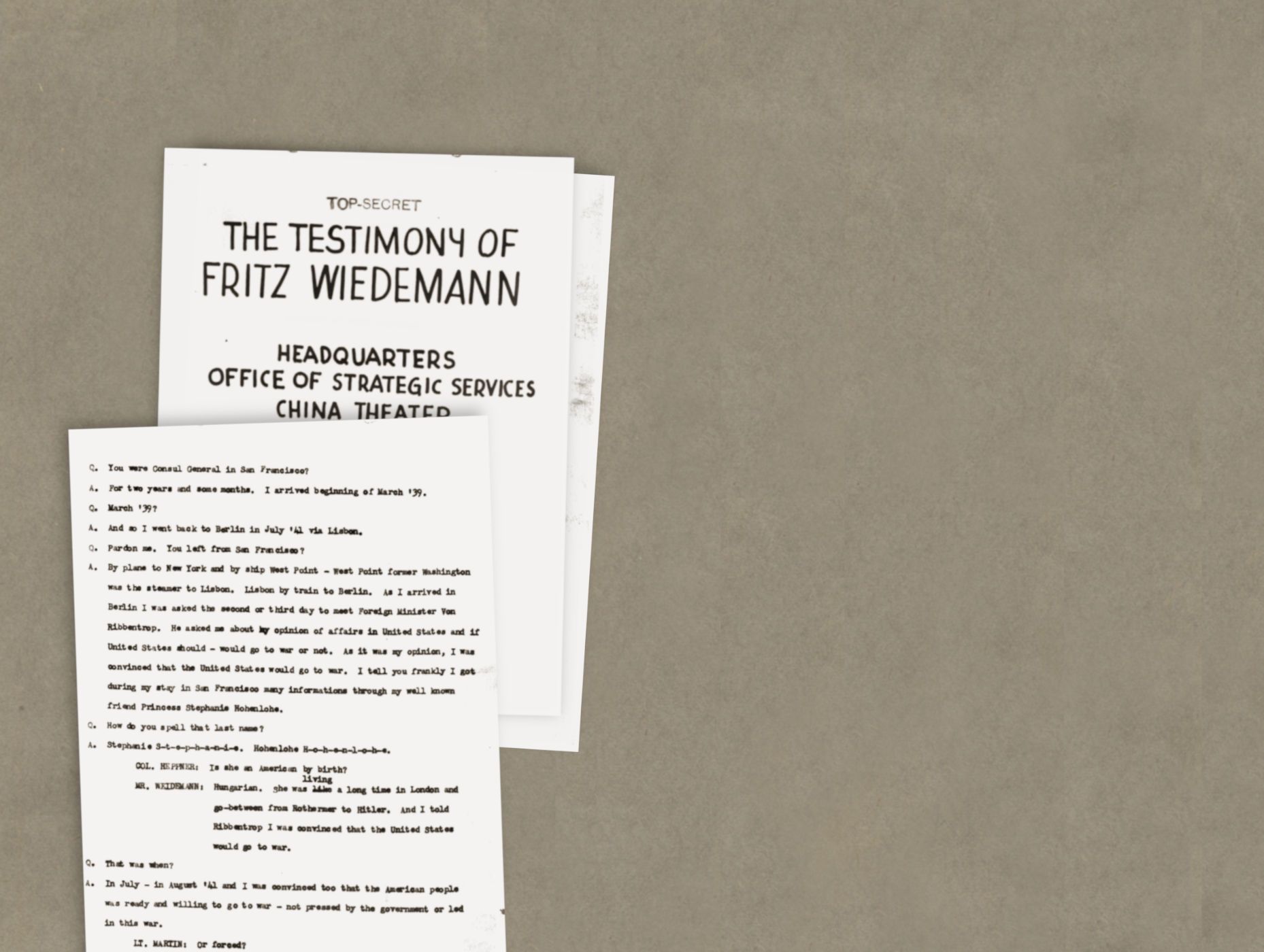
The event, on November 21 from 6pm to 8pm, will bring together Professor Thomas Weber, Bettina Hoerlin, Franz-Ludwig Count Stauffenberg, a former politician and the son of Hitler’s failed assassin, and Ulrich Schlie, Stauffenberg’s biographer and former Political Director of the German Ministry of Defence.
It will take place at McNeil Center, University of Pennsylvania, 3355 Woodland Walk, Philadelphia, PA 19104 and will be chaired by Roderick McDonald, Professor of History at Rider University, New Jersey, Aberdeen alumnus and board member of the University of Aberdeen Foundation.
Full details of the Aberdeen in America programme can be found here or follow #AberdeeninAmerica.

